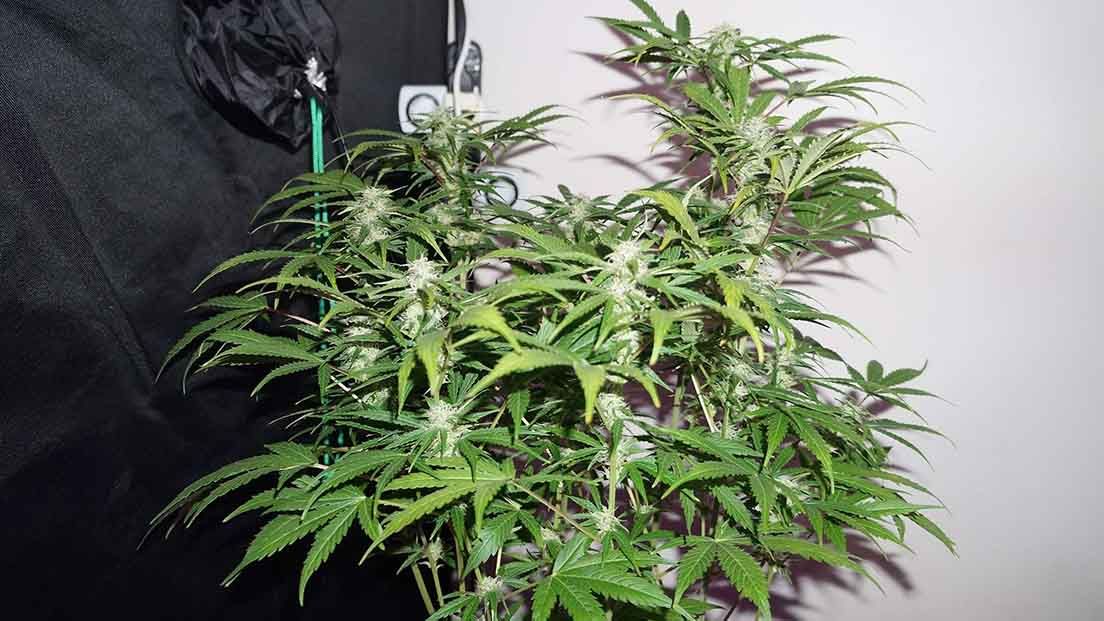Cannabis Sativa | Qué es y sus características
El término de Cannabis Sativa se introdujo en el 1753 para describir una especie particular de Cannabis. Carl Linneaus bautizó la marihuana Sativa en su publicación «Species Plantarum». Se trata de un científico naturalista sueco considerado el creador del sistema de taxonomía de los seres vivos. El nombre Sativa hace referencia a las variedades de Cannabis encontradas en la zona tropical del planeta y territorios que ocupan desde África, hasta Centro América, Sudamérica y partes de Asia.
¿Qué es el Cannabis Sativa?
Según la descripción de la Wikipedia, la marihuana Sativa es una especie herbácea de la familia Cannabaceae, anual, dioica, y originaria de las cordilleras del Himalaya, Asia. La marihuana Sativa se relaciona con una morfología y unos efectos determinados.
Actualmente, la frontera entre Cannabis Sativa e Índica no se encuentra tan delimitada, ya que lo que más abunda en los catálogos de semillas de marihuana son las especies híbridas. Por lo que existen muy pocas variedades Sativas puras. Sin embargo, esta clasificación resulta muy útil para distinguir grupos dentro de la familia cannabácea en función de rasgos morfológicos y psicoactivos.
Nuevos estudios están desvelando la probabilidad de que la división Índica y Sativa es algo impreciso, no se ajusta a como es la planta en sí y probablemente en el futuro utilicemos otros términos más ajustados a la realidad. Pero eso es otra historia, la cual trataremos cuando haya más información al respecto.

Imagen vía Wikipedia
Origen del Cannabis Sativa
Se cree que el origen de la marihuana Sativa se corresponde con un ancestro, común con la Índica, originario del sudeste asiático. El clima tropical registrado en esta zona del planeta se evidencia en la morfología de las Sativas. De esta forma, las plantas de esta variedad, tuvieron que adaptarse a las particularidades climáticas de esta parte del planeta. Las lluvias frecuentes y la humedad muy alta hacen que el PH del suelo sea muy ácido (entre 5,5 y 6,0).
También es muy determinante el fotoperiodo con el que se desarrolla el Cannabis Sativa en su contexto natural, que tiende a ser de 12/12, lo que significa que la mitad del día está expuesta a la luz y la otra mitad no. Esto explica porqué son plantas que tardan más en crecer que las de Cannabis Índica.
Morfología de la marihuana Sativa
Al contrario que la marihuana Índica, el Cannabis Sativa cuenta con un porte elevado y un tallo largo. Esta característica está pensada para competir con el resto de vegetación, muy abundante en el trópico, por conseguir luz solar. Son plantas que con entrenudos muy separados entre ellos, lo que favorece su altura.
Las hojas son finas y muy grandes con foliolos largos, rasgo que tiene que ver con la gran incidencia de sol de las zonas tropicales. Tienden a tener una floración lenta, como comentamos antes, por lo que suele tener periodos de floración más largos que las Índicas.
El color, por lo general, es más claro que el del Cannabis Índica. El motivo es que las zonas con lluvia abundante suelen contar con suelos muy lavados por la acción del agua. Esto favorece que no haya demasiados nutrientes para las plantas en el suelo. Especialmente nitratos, cuasantes del color verde oscuro en las Índicas.
En el artículo que realizamos sobre cómo diferenciar Índica y Sativa por sus hojas te contamos todos los trucos para que sepas cómo reconocerlas.
Cultivo del Cannabis Sativa
La marihuana Sativa se puede cultivar tanto en plantaciones interiores como exteriores. No obstante, y debido a su altura, las variedades que se comercializan para interiores suelen estar combinadas con Índicas para reducir su altura y el tiempo de floración. Por ello mismo, ya que su altura asciende fácilmente a los 4 metros, se recomienda el cultivo de Cannabis Sativa pura solamente en ambientes exteriores.
El aspecto del cultivo de cepas Sativa que más preocupa es el tiempo que tarda en completar su maduración. Al contrario que las variedades Índica, la Sativa necesita unos periodos mucho más largos para conseguir finalizar su floración. Hay cepas Sativa que precisan de 12, 14, 16, e incluso 18 semanas, solo para terminar su periodo de floración. A esto hay que sumar las que necesita para completar la fase inicial del crecimiento vegetativo.
Debido a que esta planta fue extraída de zonas tropicales, está mejor preparada para áreas con clima con veranos largos y fotoperiodos de tiempo con 50% de luz y 50% de sombra. A diferencia que el Cannabis Índica, que es óptimo para zonas con veranos cortos e inviernos más duros.
Efectos de la marihuana Sativa
Los efectos de las variedades Indica y Sativa pueden variar significativamente. Las variedades Sativa suelen proporcionar un subidón más cerebral y estimulante, lo que las hace adecuadas para actividades sociales y creativas. Por el contrario, las cepas Indica ofrecen un efecto relajante y calmante, que a menudo conduce a un «colocón corporal» que fomenta la tranquilidad y la relajación profunda. Es crucial comprender los efectos de cada variedad para tomar una decisión informada basada en las preferencias individuales.
La característica principal del Cannabis Sativa es la alta concentración de THC, en contraposición a la baja cantidad de CBD con la que cuenta. Los consumidores se decantan por esta variedad de Cannabis por sus efectos energéticos. De esta forma, es una marihuana que se utiliza mucho en ámbitos recreativos y sociales. A diferencia de las Índicas, que cuentan con efectos más introvertidos y narcotizantes. Las Sativas suelen ofrecer un «subidón» con altas dosis de psicodelia. Si las Índicas se centran en los efectos físicos, el «high» del Cannabis Sativa ofrece una experiencia mental larga y potente.
Ventajas de las Sativas
Las variedades Sativa ofrecen varias ventajas que atraen a los aficionados al cannabis. Sus efectos vigorizantes y edificantes las hacen adecuadas para el consumo diurno, fomentando la creatividad y la productividad. Además, las Sativas son conocidas por sus aromas únicos y atractivos, que varían de una cepa a otra.
- Efectos vigorizantes y estimulantes: Las variedades Sativa son conocidas por sus efectos vigorizantes y estimulantes. Proporcionan un subidón cerebral que aumenta la energía, la creatividad y la concentración, lo que las hace ideales para el consumo diurno y las actividades sociales.
- Estimulación Creativa: Las Sativas tienen fama de potenciar la creatividad y la imaginación. Muchos artistas, músicos y personas que buscan inspiración suelen recurrir a las variedades Sativa para aprovechar su potencial creativo.
- Sedación reducida: A diferencia de las cepas Indica, conocidas por sus propiedades sedantes, las Sativas suelen tener niveles más bajos de compuestos sedantes. Esto las convierte en la opción preferida de los usuarios que quieren evitar sentirse excesivamente relajados o somnolientos.
- Beneficios Terapéuticos: Las Sativa pueden ofrecer beneficios terapéuticos como elevar el estado de ánimo, reducir el estrés y la ansiedad, y fomentar una sensación de bienestar. Algunos consumidores de cannabis medicinal encuentran alivio a ciertos síntomas mediante el consumo de Sativas.
- Sabores y Aromas Distintivos: Las cepas Sativa suelen presentar sabores y aromas únicos y atractivos. Los perfiles de terpenos de las Sativas contribuyen a una diversa gama de sabores y aromas, que se suman a la experiencia sensorial general de los entusiastas del cannabis.
Desventajas de las Sativas
A pesar de sus muchas ventajas, las variedades Sativa también tienen ciertos inconvenientes. Una preocupación importante es el mayor tiempo de floración en comparación con las variedades Indica. Las plantas Sativa pueden tardar varias semanas más en alcanzar la plena madurez, lo que puede exigir más paciencia a los cultivadores. Además, la alta estatura de las plantas Sativa puede plantear problemas en espacios de cultivo interior con altura vertical limitada.
- Tiempo de floración más largo: Las variedades Sativa suelen tener un período de floración más largo que las Indica. Esto significa que los cultivadores pueden tener que esperar más tiempo antes de cosechar sus plantas de cannabis, lo que se traduce en un proceso de cultivo más largo.
- Altura y Espacio: Las Sativas tienden a crecer altas y larguiruchas, alcanzando a menudo alturas considerables. Esto puede suponer un reto para los cultivadores de interior con un espacio vertical limitado. Además, los cultivadores de exterior pueden tener que tener en cuenta la altura de la planta y su visibilidad potencial a la hora de elegir un lugar de cultivo.
- Mayor contenido de THC: Las variedades sativa suelen tener mayores niveles de THC (tetrahidrocannabinol), el compuesto psicoactivo del cannabis. Aunque esto puede ser deseable para algunos consumidores que buscan efectos intensos, puede resultar abrumador para los que tienen poca tolerancia o sensibilidad al THC.
- Aumento de la Ansiedad y la Paranoia: Algunos individuos pueden experimentar mayores niveles de ansiedad o paranoia al consumir cepas Sativa, especialmente las que tienen un alto contenido en THC. Esta reacción adversa puede ser más pronunciada en usuarios propensos a la ansiedad o con sensibilidad al THC.
- Sólo Uso Diurno: Debido a sus efectos energizantes, las cepas Sativa son más adecuadas para el uso diurno. Sin embargo, para los usuarios que buscan relajarse o conciliar el sueño, se suelen preferir las cepas Indica por sus propiedades calmantes y sedantes.
Las Variedades Sativa más Populares y Potentes
El mundo de las variedades Sativa ofrece una gran variedad de opciones, cada una con su propia potencia y atractivo. Entre las variedades Sativa más buscadas están las que tienen altos niveles de THC, que proporcionan una experiencia potente y energizante. Estas variedades se han ganado el favor de los entendidos en cannabis que aprecian los efectos estimulantes y los sabores que ofrecen.
Para finalizar este artículo te damos un enlace a nuestro ranking de la mejor marihuana Sativa del mundo, ahí podrás ver cuáles han sido las cepas más exitosas, tanto clásicas, como novedades y aquellas de buena relación calidad/precio, y sus características principales.

El Cannabis Sativa sigue cautivando e intrigando a los aficionados de todo el mundo. Con su rica historia, diversos efectos e innumerables variedades por explorar, la Sativa sigue siendo una hierba encantadora que inspira creatividad, relajación y disfrute. Tanto si se experimenta por sus beneficios medicinales como por placer recreativo, la Sativa se ha asegurado su lugar como planta apreciada y valiosa en el ámbito de la cultura del cannabis.
Esperamos que este contenido sobre la marihuana Sativa te haya hecho pasar un buen rato y aprender, si ha sido así, por favor síguenos en redes sociales y en nuestra lista de correo, enlaces más abajo. Ahora, sigue leyendo con todo sobre la otra cara de la marihuana, el cannabis Índica.
Fundador de Experiencia Natural, creativo y emprendedor, diseñador, master en grower y marketing. Por una normalización de todas las plantas y sustancias primando pacientes y usuarios.













